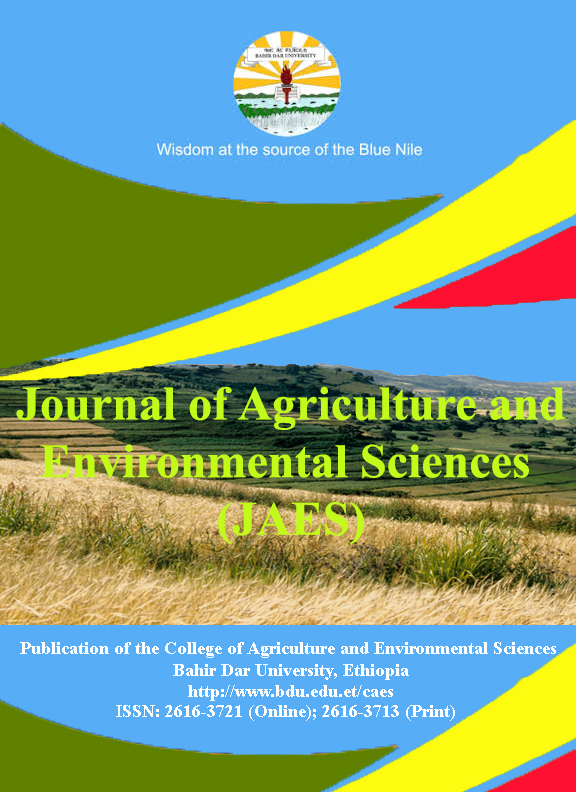Effects of Different Treatment Methods on the Composition of Nutrients and Phorbol Ester Levels of Jatropha (Jatropha curcasL.) Seed Meal Produced in Ethiopia
Keywords:
Biological treatment, Chemical treatment, Nutrient composition, Physical treatment
Abstract
Seed meal of Jatropha that is obtained after extracting the oil has high nutritive value in terms of crude protein that can be used as animal feed. However, Jatropha seed meal contains several anti-nutritive compounds that can be probably toxic to animals. The aim of the present study was therefore to evaluate the effects of different treatment methods on the composition of nutrients, anti-nutritional factors and metabolizable energy content of Jatropha seed meal. The seed meal was collected from a biodiesel industry at Bati, Oromia Zone of Amhara Region, Ethiopia and treated using sodium hydroxide, backing yeast and heat and compared with the control (untreated) jatropha seed meal. The nutrient composition (Ash, Crude Protein, Ether Extract, Crude Fiber, Neutral Detergent Fiber, Acid Detergent Fiber and Acid Detergent Lignin), Phorbol ester, metabolizable energy and non-fiber carbohydrate contents were estimated using the standard formula. The result indicates that crude protein content varied from 26.97% in sodium hydroxide to 38.83% in the control treatments on a dry matter basis. The ash content of sodium hydroxide treated and the control were significantly higher (p<0.05) than yeast and heat-treated treatments. The ether extract content of sodium hydroxide-treated was significantly lowest (p<0.05) when compared to the other treatments. The crude fiber contents of sodium hydroxide (30.05) and yeast-treated jatropha seed meal (33.67) were higher (p<0.05) than heat treated (28.54) and the control (24.3) treatments. The highest neutral detergent fiber and crude fiber contents were observed form yeast and sodium hydroxide treatments whereas the lowest from the control. The metabolizable energy contents of the control was higher (P<0.05) than all other treated jatropha seed meal. Sodium hydroxide and the control treatments had higher (p<0.05) non-fiber carbohydrate content than the yeast treatment. The lowest (360.35) phorbolester content was recorded from yeast-treated jatropha seed meal followed by sodium hydroxide (872.15) treated while the highest (2285.9 μg TPA eq./g ) wasmfrom untreated control. Treating the Jatropha seed meal with yeast improved the feed values, reduced the phorbol ester content and increased the crude protein and ether extract than the other treatments, which can be recommended as possible treatment option for JSM. Feeding trial of yeast-treated JSM is also recommended for further research.Downloads
Download data is not yet available.
